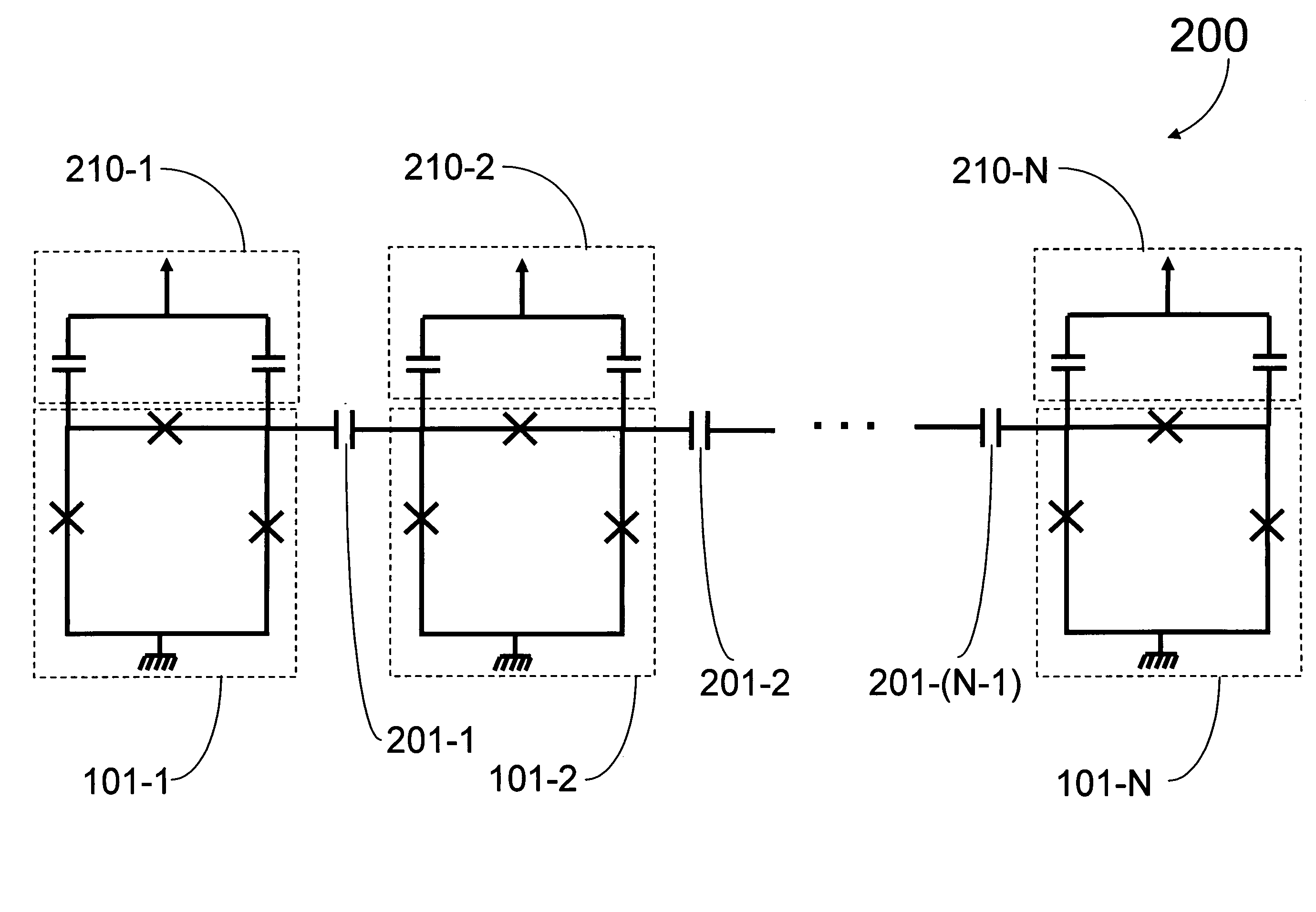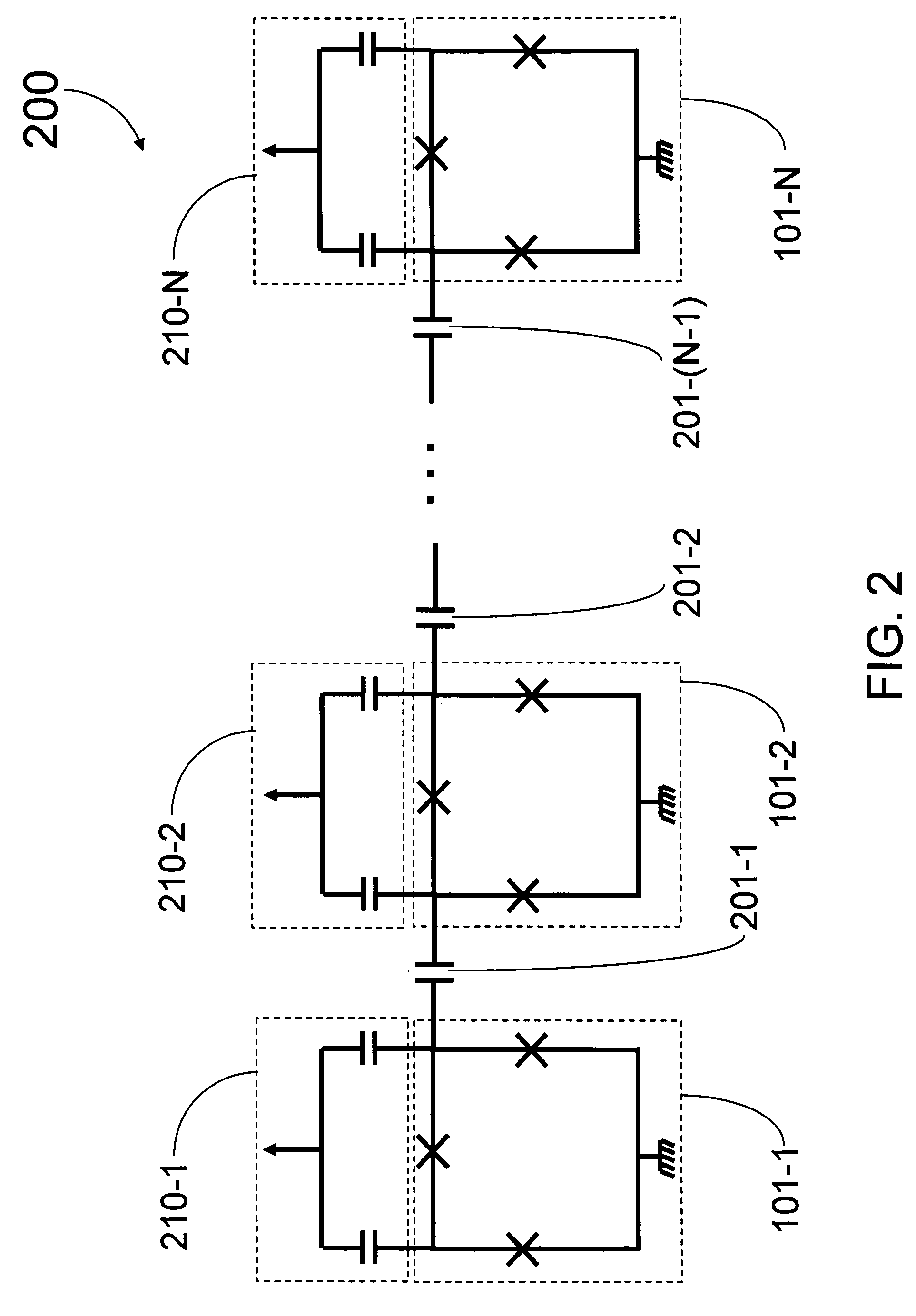Superconducting qubits having a plurality of capacitive couplings
a capacitive coupling and superconducting technology, applied in the field of quantum computing, can solve the problems of poor (short) decoherence time, stringent control parameter requirements, and identification of systems that can support quantum computation
- Summary
- Abstract
- Description
- Claims
- Application Information
AI Technical Summary
Problems solved by technology
Method used
Image
Examples
example 1
Mathematical Example of Quantum Nondemolition Charge Measurement of a Flux Qubit
[0076]In a qubit system, a readout operator does not necessarily commute with the qubit's Hamiltonian, making the readout process destructive for the qubit's eigenstates. Nevertheless, it can be possible to design the system and readout biasing point in such a way that the two commute in the reduced two level Hilbert space. An example of such a case is presented. In this example, the energy eigenstates of a flux qubit can be read out, in a nondemolition way, using the charge degree of freedom.
[0077]Readout of the final states of the qubits is an important part of any quantum computation scheme. Most commonly, the readout is assumed to be projective, meaning that the state of the qubit is projected into the eigenstates of the readout operator. This, however, requires strong qubit-detector coupling and fast readout response, which in practice can limit the coherence time of the system because of large back...
example 2
Mathematical Example of Quantum Nondemolition Charge Measurement of a Qubit Using Operator Notation
[0100]Embodiments of the present invention can be described in terms of operator notation. That is, a qubit such as the qubit shown in FIGS. 1 and 5 can be described in mathematical language in more complete accordance with the principles of quantum mechanics than that language used in Example 1. The results of the calculations of each example are similar and in some embodiments are the same. See, Amin, 2005, Physical Review B 71, 140505(R); arXiv.org: cond-mat / 0412286v1 (Mon., Dec. 13, 2004); and arXiv.org: cond-mat / 0412286v2 (Thu., Mar. 10, 2005), each of which are hereby incorporated by reference in its entirety
example 3
Mathematical Example of Quantum Nondemolition Charge Measurement of a Charge Qubit
[0101]None of the above arguments depended on the qubit's regime of operation, although Example 1 mainly focused on the flux regime. Known restrictions independently include: the qubit island voltages should not be too small to be detectable by the SET, or rf-SET; and the qubit should not be too far in the flux regime. The scheme works when the qubit is in the charge regime (where the charging energy exceeds the Josephson energy). The qubit wave function in the charge basis can be written as |nA, nB>, where nA, and nB are the number of Cooper pairs on the two islands (H and δH are easily obtained by replacing Pφ and Pθ with nA+nB, and nA−nB, respectively). When ngA=ngB (that is when n−=0), the states |n,n+1> and |n+1,n> will be degenerate. The presence of the Josephson term of the third junction will remove this degeneracy, making the rotated states |n, ±>=(|n,n+1>±|n+1,n>) / 21 / 2 preferred basis for the...
PUM
 Login to View More
Login to View More Abstract
Description
Claims
Application Information
 Login to View More
Login to View More - R&D
- Intellectual Property
- Life Sciences
- Materials
- Tech Scout
- Unparalleled Data Quality
- Higher Quality Content
- 60% Fewer Hallucinations
Browse by: Latest US Patents, China's latest patents, Technical Efficacy Thesaurus, Application Domain, Technology Topic, Popular Technical Reports.
© 2025 PatSnap. All rights reserved.Legal|Privacy policy|Modern Slavery Act Transparency Statement|Sitemap|About US| Contact US: help@patsnap.com



